US ambassador Jane Hartley: ‘Sunak’s government is like ours – honest and direct’
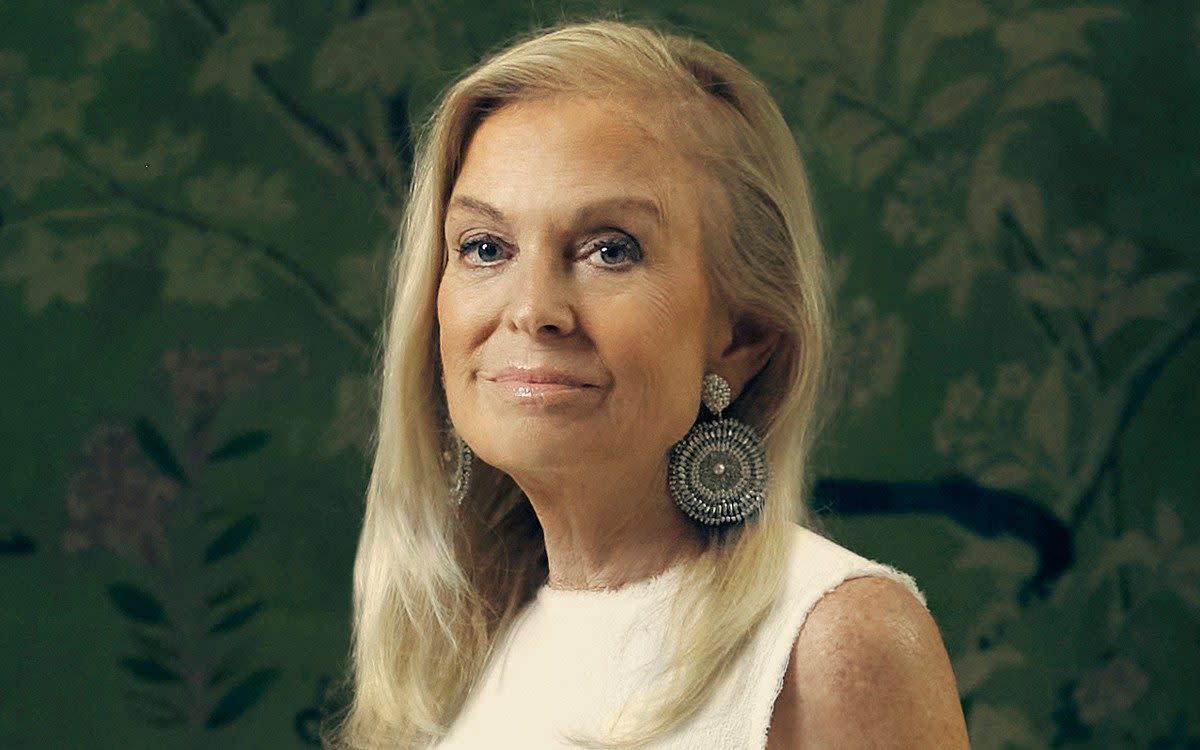
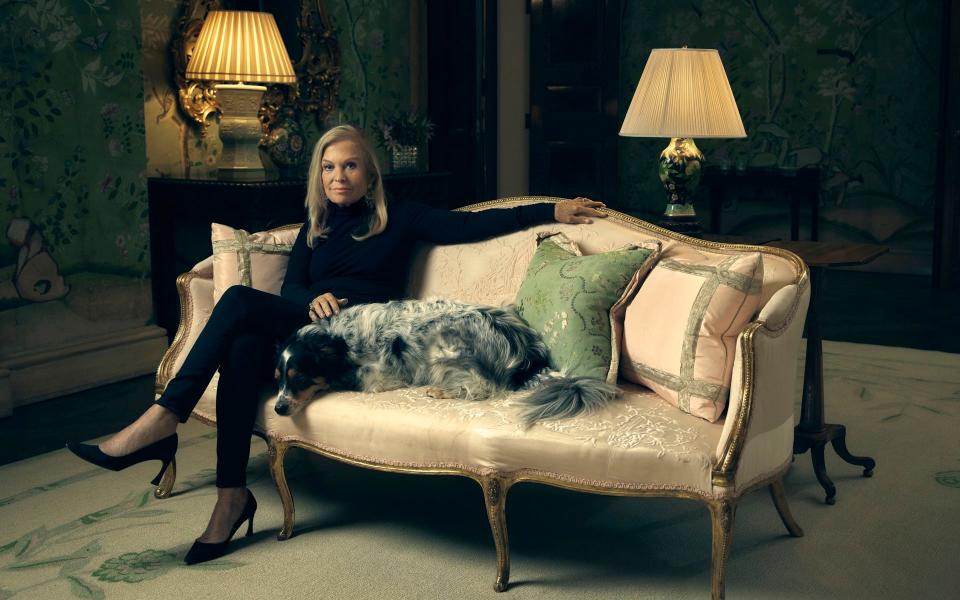
Key points that distinguish Winfield House from its neighbours: it is the sole Neo-Georgian villa along the Outer Crescent of Regent’s Park with its own US Secret Service detail. Its 12.5-acre grounds constitute the second-largest private garden in London, after Buckingham Palace’s. And tonight, it’s the only site in Central London where rotors thrum directly overhead, as not one, but two CH-47 Chinook heavy-lift helicopters alight on the chequerboard lawn – a rehearsal for the arrival of Vice President Kamala Harris tomorrow evening. ‘No photos,’ a staffer murmurs as ‘Army 2’ and a second Chinook (there’s always a decoy) lumber back into the inky sky.
‘That’s sort of a typical day here,’ says Jane Hartley, US ambassador to the Court of St James’s and the current denizen of Winfield House. Earlier today, she hosted a congressional delegation, met with the Deputy Prime Minister and the national security advisor, and prepared for the AI Safety Summit, the reason for VPOTUS’s visit. ‘Actually I’m not sure we have helicopters every day, but our days are very busy here, very intense.’
Tonight she faces a more candlelit form of intensity: a dinner in honour of women thought leaders, entrepreneurs and creators co-hosted with American fashion designer Tory Burch. ‘Tory is a friend and I’m a huge admirer of hers. She always talks about how, when she first started her brand, she couldn’t get financing. I think she’s a billionaire now,’ Hartley says. She’s dressed for the occasion in a Chartreuse-green satin dress by the designer (‘I saw it online and loved the colour’), massive earrings and black Manolo Blahnik heels. ‘Helping entrepreneurs, especially women, who have great ideas [to] get a head start is something we both very much care about.’
Winfield is magnificent: the American dream of a British stately home, realised at American scale thanks to an American budget. Hartley – warm, self-possessed, blonde – fits right into the opulence of the Yellow Room. Behind her, a large Helen Frankenthaler painting hangs amid the 18th-century-style French boiserie panelling. There’s another Frankenthaler across the room; near it are two Josef Albers squares. But her favourite art is just outside, in the foyer.
‘I have two amazing de Koonings that I love for sentimental reasons. They were lent to me by a good friend who was the chair of the de Kooning Foundation,’ she says, referring to John L Eastman, the arts and entertainment lawyer (who also happened to be Linda McCartney’s brother). ‘He lent me one de Kooning when I was ambassador to France. And we had a joke – he used to say, “You get Court of St James’s, you get two.” He called me the day after my nomination was in The New York Times. It’s sentimental because he passed away suddenly from pancreatic cancer last summer. It’s a sadness to me, but I look at those pieces of art and think of him.’
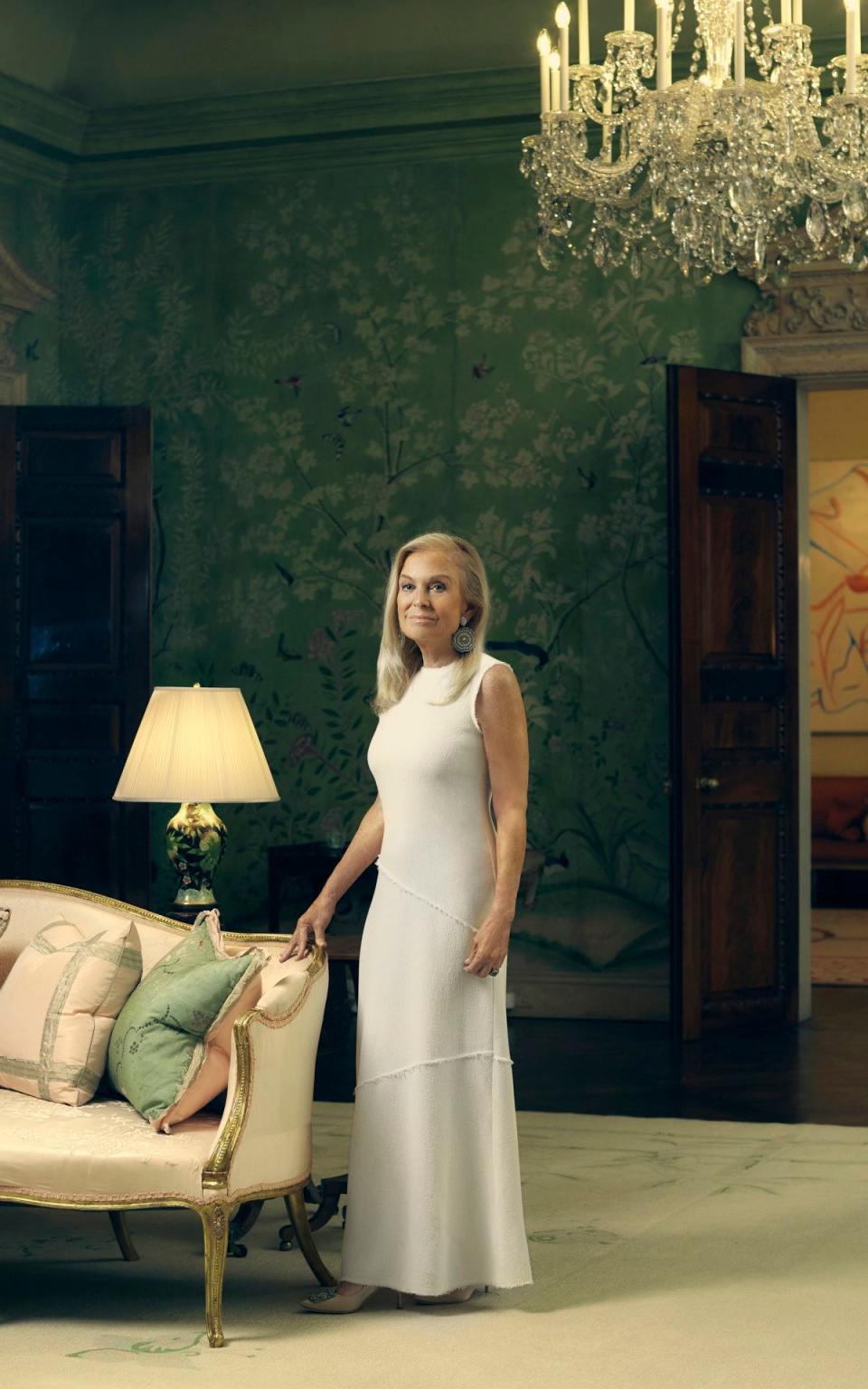
In Netflix’s recent hit series The Diplomat, Keri Russell plays Kate Wyler, another American woman appointed ambassador to the UK. Wyler chafes against ‘the Cinderella thing’ and has to be cajoled into wearing the right dress for a Vogue photo shoot. Hartley, only the second woman to serve as ambassador to the UK, seems to enjoy the aspects of the job that her fictional counterpart disdains. Including fashion. ‘I like clothes,’ she nods. ‘I have my own style and it hasn’t really changed from New York to here. But fashion is soft diplomacy. It’s important – the clothes you wear represent who you are and how you want to be perceived.’
Fashion journalists tend to ascribe meaning and divine messages to outfits worn by high-profile figures, rarely getting to ask if our interpretations were correct. The ambassador acknowledges that she thinks about how to deploy her outfits ‘to make statements in a positive way’. For events around the anniversary of the start of Russia’s assault on Ukraine in February, she wore a blue dress to her public engagements one day and a yellow coat the next, a coupling that evoked the Ukrainian flag. ‘That was intentional.’
She also wore blue and yellow for her Senate confirmation hearings. The day she was confirmed by the Senate Committee on Foreign Relations (‘unanimously, I might add’), she chose white, signifying empowerment for women. She selected a different white dress to present her credentials to the Queen.
She wore French designers in France and tries to wear mainly British and American in London. Along with Tory Burch, she favours Ralph Lauren, Alexander McQueen, Erdem and Emilia Wickstead. ‘I try to mix it. I like Stella McCartney and I’ve also gotten to know Self-Portrait.’ She wore a pink dress from the brand to host a Barbie screening at Winfield, aka the Ambassador’s Dreamhouse, in July. On her rare quiet weekend, she likes to take Bear, her Australian Shepherd, for walks around Marylebone. Her strolls are helping her get acquainted with the ‘fantastic’ British high street. Some aspects of British dress still elude her, however. ‘I’ve yet to find a hat that looks good on me. I’m still looking.’
Hartley, now 73, has served three presidents since she first went to Washington, aged 21. After a job in the Carter White House, she bounced between the private and public sectors, working as a broadcast executive and CEO to economic and political advisory firms including G7 Group and Observatory Group. In 2004, she happened to be standing near the stage at the Democratic Convention in Boston when a near-unknown state senator named Barack Obama ascended to speak. ‘He gave a speech that I will never forget as long as I live,’ she says. ‘I remember going home and calling a friend from Chicago and asking, “Is this guy for real?” And they said, “He’s very much for real.”’
Hartley became one of Obama’s top fundraisers. Following his re-election, senior advisor Valerie Jarrett rang her, asking, ‘So what do you think about France?’ She served as ambassador to France and Monaco from 2014 to 2017, a period during which France endured the Charlie Hebdo shooting, Bataclan rampage and Nice truck attack. ‘I went to France expecting my role to be focused on economic issues, trade and cultural exchange. Instead, key things I was dealing with were counterintelligence, law enforcement and military.’ At the end of her term, President François Hollande awarded her the Legion of Honour in recognition of her work. ‘Even in difficult times, you have to lead.’
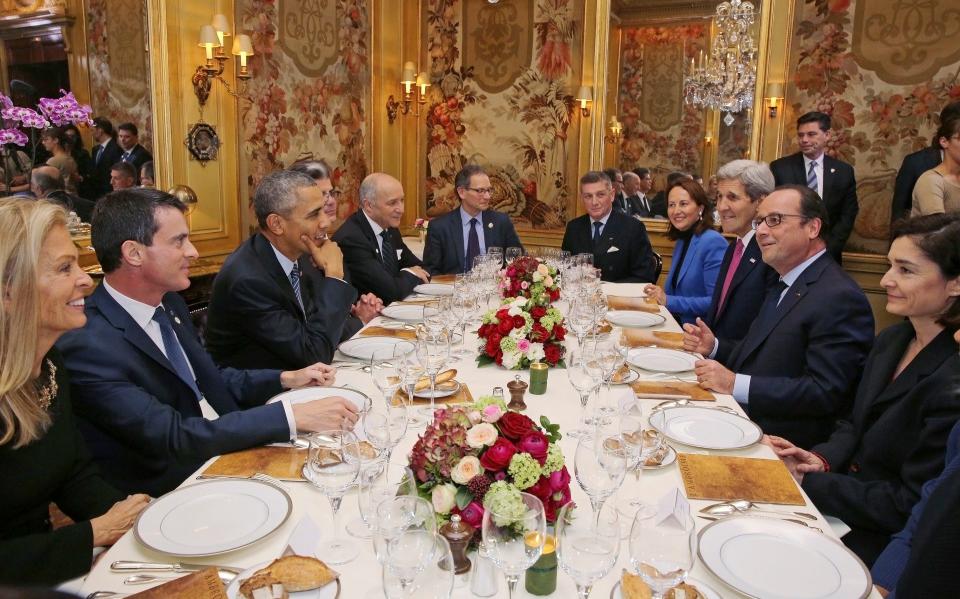
After France, she told her husband, investment banker and Evercore chairman emeritus Ralph Schlosstein, that she was ready to enjoy their life in New York for a while. Unless… ‘The only place I was really interested in coming was the Court of St James’s. But I did not expect it.’ She arrived in London last summer, second de Kooning in tow.
London was supposed to be a relief after years of ‘somewhat chaotic’ US politics. ‘I had been led to expect stability here,’ she says. ‘When I arrived, all of a sudden’ – poof! – ‘there was no stability.’ Within months, she was on her third prime minister. She’s enjoyed ‘a very positive relationship right from the beginning’ with Prime Minister Rishi Sunak and his No 10 team. ‘What I like about them is the same thing I like about our government: they care deeply about the country, and they are honest and direct.’ For the record, she likes the Labour leader, too: ‘He’s a guy with fantastic integrity and wisdom.’
Along with her trio of PMs, Hartley’s first year in post also saw the Platinum Jubilee, the death of the Queen, the Coronation of King Charles III and the 25th anniversary of the Good Friday Agreement. She was the last ambassador to present her credentials to the Queen, in July 2022 – a ritual that took place via Zoom due to the extreme heat of the day. ‘I still got a very strong impression from her. I came away feeling so impressed by her curiosity, her substantive knowledge of policy and her kindness.’ Near the end of their 40-minute call, the Queen expressed concern that Hartley might miss her family (Schlosstein splits his time between London and the couple’s homes in New York). ‘She was worried that I was going to be alone here a lot of the time. She brightened up when I told her I had my dog with me. She said, “Well, that will help.”’
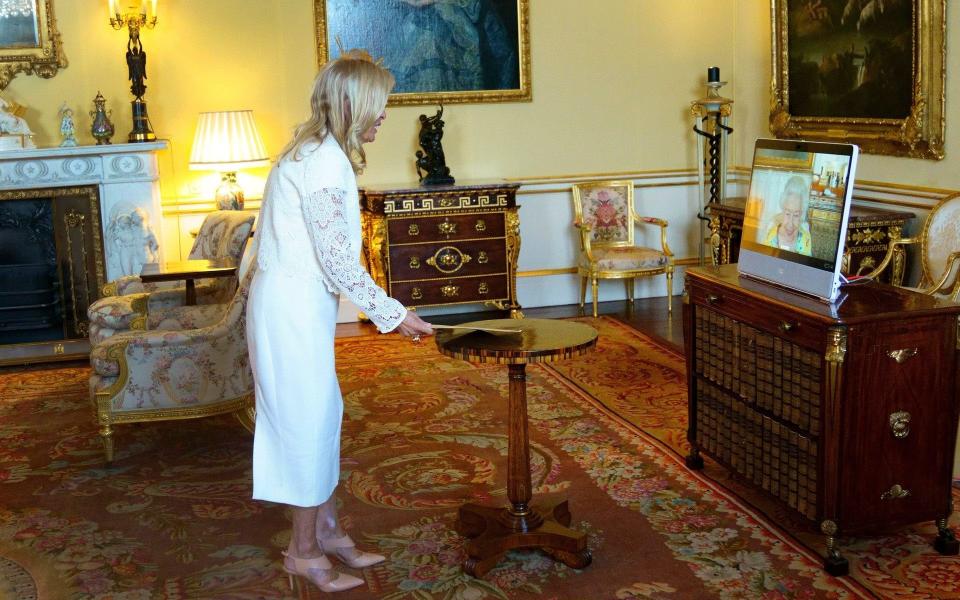
Two months later, the Queen died. Hartley gave her staff at Winfield House the day off. Later she accompanied the Bidens as they paid their respects to the late monarch at her lying-in-state at Westminster Abbey. ‘For me, and I think for President Biden, the death of this woman who led her country in such a committed way was incredibly emotional. If there ever was a person who was the epitome of a life of public service, it was the Queen.’ The ambassador has also spent time with the King, in Scotland; she admires the work he’s done ‘quietly and below the radar’ on apprenticeships and skills training for young people through The Prince’s Trust. ‘Hopefully we can do some work together in this area.’ (A true diplomat, Hartley has a talent for formulating specific, credible praise for everyone with whom her role brings her into contact.)
As in France, Hartley anticipated that her role here would focus on economic cooperation. Geopolitical events have widened the emphasis to take in discussions on Ukraine and the Middle East. It helps ‘tremendously’ that US and UK policies have been so aligned, that the UK has been ‘steadfast’: ‘We support the same values of freedom and democracy, which make us both stronger.
‘The special relationship is truly special. So I knew when I was accepting it that this was going to be an important job. I think now that I’m here, I’ve realised that it’s even more important than I thought… Whether it’s Ukraine, the Mideast or AI, it’s important for global alliances, and particularly for the US and the UK, to be in sync. And we are.’
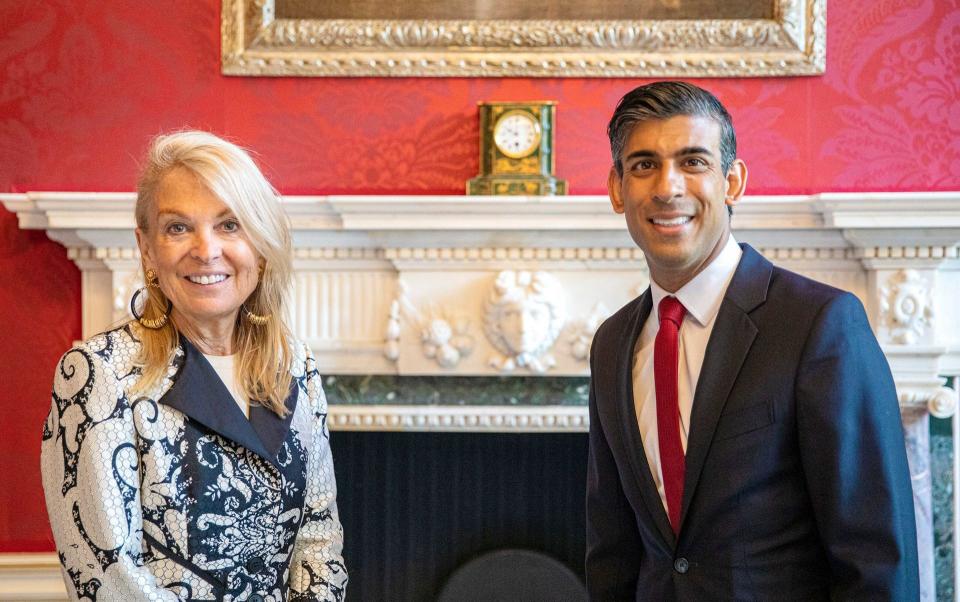
Two days later, an atrium at the US Embassy in Nine Elms fills with press and supporters for the Vice President’s speech on AI. ‘As United States ambassador to the UK, I have seen how closely our governments collaborate – how our militaries train together, how our intelligence agencies share our most tightly held secrets,’ Hartley says in her introduction. ‘And on the biggest challenges facing our world, from climate change to Ukraine to the Middle East, we work together, driven by our commitment to values and to common goals. Artificial intelligence is no different, and I believe the challenge of managing its development will become another area of critical and important cooperation in our special relationship with the United Kingdom.’
The £750-million glass edifice of Embassy London is festooned with origami-like sails (they make the building more energy-efficient) and surrounded by an actual moat. Inside hang portraits of 200 years’ worth of American ambassadors. Only one of those depicts a woman: Anne L Armstrong, who served as ambassador for just shy of a year in the mid-1970s.
‘When I first got here and walked down the hall of portraits, I realised there were huge portraits of white men throughout the hall, and then a tiny little one of Anne Armstrong. I thought, God, we’ve got to do better than this,’ Hartley says. ‘Two women in 200 years, that’s a very bad record.’
There have been great strides at the State Department over the last 10 to 15 years, she clarifies. Look at Madeleine Albright and Hillary Clinton, two female Secretaries of State. ‘There has been a movement to promote women. It’s very different than it would have been a decade ago.’
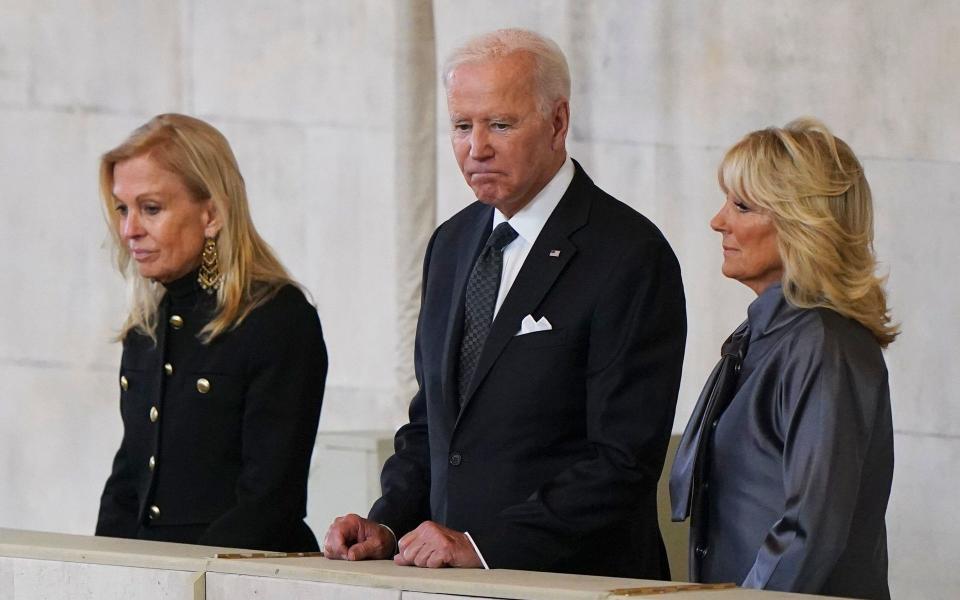
Ambassadors take different approaches to their roles in London. Obama-era ambassador Matthew Barzun and wife Brooke were social mixologists who served fried chicken to royals and hosted singalongs with
Ed Sheeran. Woody and Suzanne Johnson received a frostier reception. Their Winfield became a fortress of Trumpism in the heart of London. After intimate dinners, Mrs Johnson – a former equities manager turned actor and close personal friend of Melania Trump’s – is said to have invited acquaintances over to while away an evening shopping on Net-a-Porter.
With Hartley, ‘Winfield House has returned to the era of convening and conviviality our diverse London-based community enjoyed when the Barzuns were there,’ says Yana Peel, Chanel’s global head of arts and culture, recalling a Fourth of July party where guests ate hamburgers as Ellie Goulding performed. Hartley’s ‘superpowers as a connector and facilitator’ are of particular note. ‘[She’s made] such an incredible impression in such a brief time in London.’
The arts are a passion. Hartley has opened Winfield to the Royal Shakespeare Company and plans to invite them back to perform on that landmark lawn in the spring. She brought Alvin Ailey dancers to teach a class at a local school. Last month, she hosted a dinner to celebrate the 20th anniversary of Frieze London (the art fair that effectively takes place in her front garden) attended by artist George Condo. Frieze London director Eva Langret called her ‘a keen and energetic supporter of the arts’ in an email. ‘Her hospitality around Frieze London this year was remarkable and the UK-US cultural ties are stronger than ever since the beginning of her tenure.’
‘Number one, you have to care. And I care about arts and culture,’ Hartley says. ‘Something I learned from President Obama is that the arts are a universal language and can break down borders. Culture brings people together.’
So do invitations to her events. Hartley and Burch’s intimate dinner draws a guest list that would be the envy of any event-planner. At cocktails before dinner, the likes of Akshata Murty, Elizabeth Debicki, Saoirse Ronan, Sarah Burton and Philippa Perry eddy and swirl around the Green Room, where Hartley’s dress seems almost art-directed to complement the hand-painted Chinese wallpaper. A magician (dashing, not annoying) and Champagne waiters circulate.
One guest wonders aloud whether anyone knows someone who might be suitable to lead a new project. Cue the superpowers. ‘I have just the person for you,’ the ambassador declares, pulling her away. This is where diplomacy happens, as much as it does from behind a lectern or at a name-tagged business lunch.
‘Jane is a brilliant entrepreneur and has a deep understanding of how to navigate complex issues,’ Burch says in an email after the event. ‘I admire her for many reasons and one of her most impressive qualities is the way she demonstrates grace under pressure.’
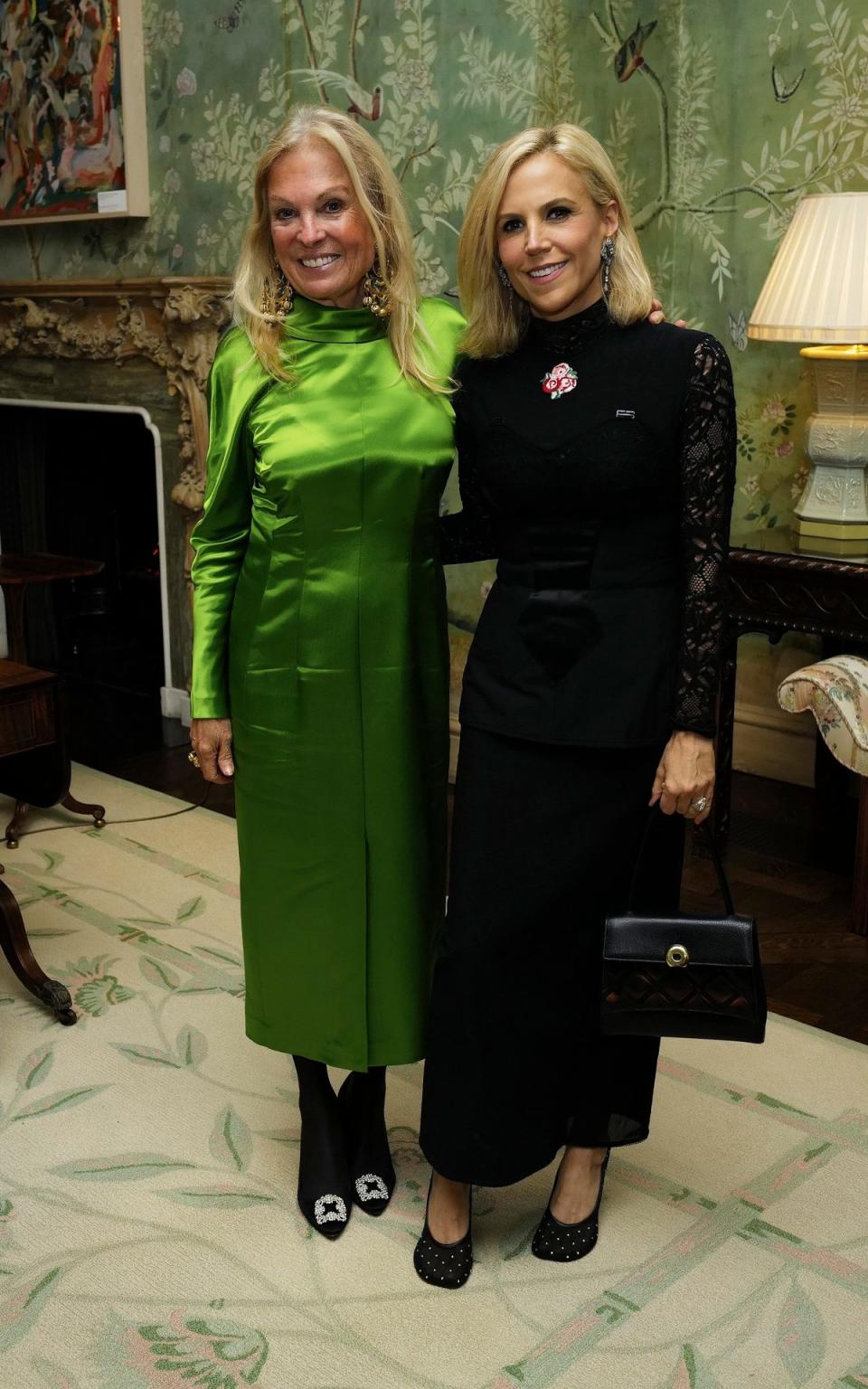
Hartley, ‘a bit of a workaholic’, is looking forward to a bit of downtime for Thanksgiving (on Thursday). The American holiday is a time for family, reflection and – for ambassadors, anyway – speech-making. She’s still working on her remarks for the Thanksgiving Day service for American expats at St Paul’s Cathedral. ‘I’m thinking hard about the speech,’ she says. ‘Thanksgiving is about being grateful, and I know that day I’ll be grateful for so much – for my family being together [son Jamie is a financial analyst in London, her daughter, Kate, is the highest-ranking woman in the US for Italian luxury brand Loro Piana], for a couple of days of hiking and good food. I’ll be thankful that my husband might get into the kitchen; he’s a really good cook. I also feel lucky to have this job, even on difficult days, and lucky to be working for President Biden, frankly, and his leadership during what are not easy times.’ She pauses. ‘But I also want to talk about where the world is, and that’s what I haven’t quite figured out.’
At last year’s service, she spoke about role models and what it means to have a sense of duty, ‘which is why I have served three presidents’. She also reiterated the promise she made to her family: ‘that this one would be the last’. I wonder if she’ll find it so easy to disengage. After all of it – Winfield, Embassy London, concerts and Chinooks on the lawn, state dinners, a role at the heart of current affairs – how does she envisage feeling about the eventual transition back to regular life when her term ends, whenever that may be?
‘How will I go back to my regular life?’ she echoes. ‘Happily. I am so lucky to have this job. Hopefully I’ve made a little bit of a difference. But listen, I’ll go back to my job, my friends and my family in New York. To dog walks in Central Park instead of Regent’s Park. And it will be fine.’


